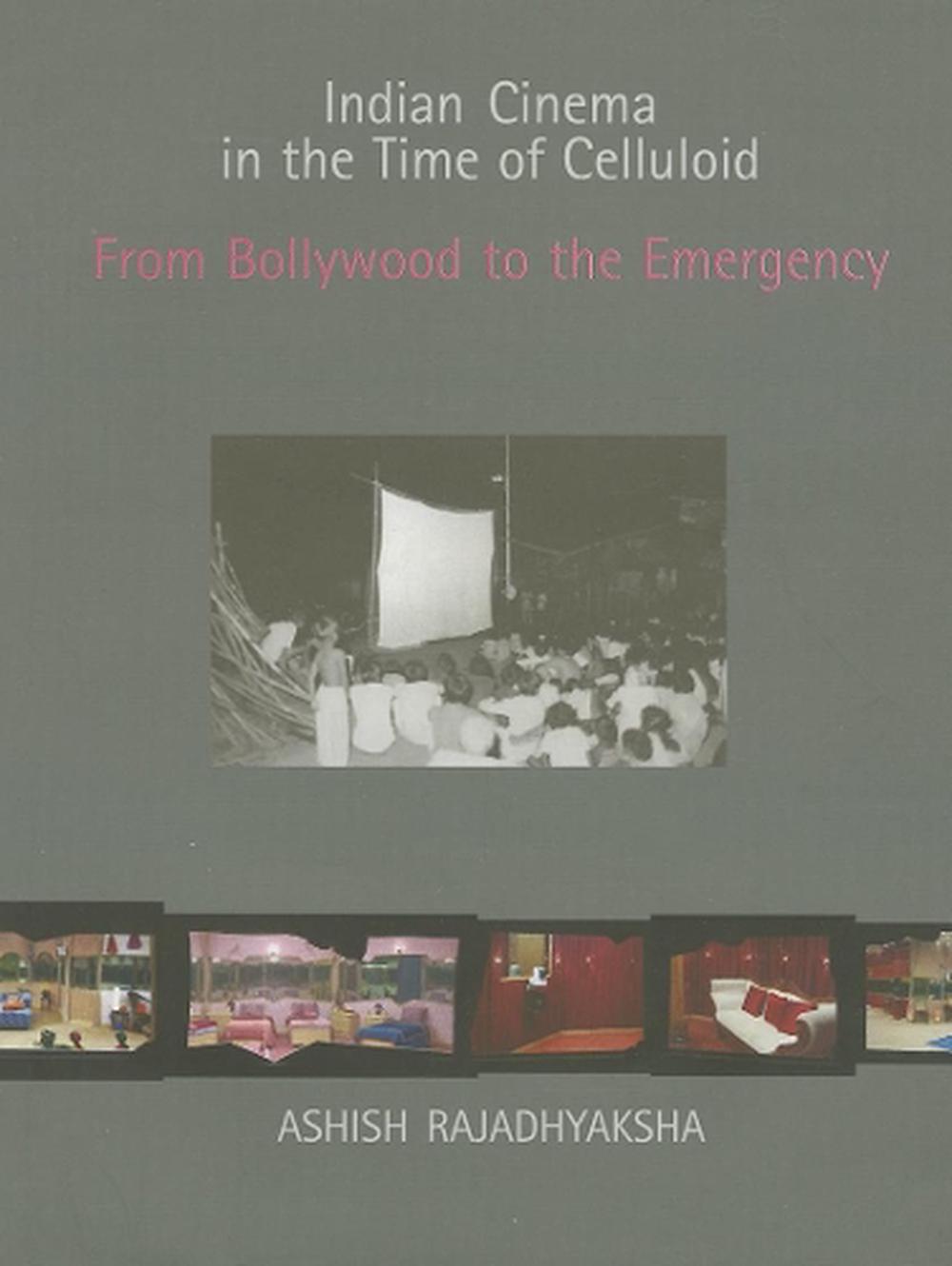
Indian Cinema in the Time of Celluloid
by Ashish Rajadhyaksha
Argues that any exploration of the social uses to which cinema is put in a place like India can only make sense if it transforms our understanding of cinema itself. Taking as his timeframe the era of celluloid, the author examines three moments of crisis for the Indian State in which cinema played a central role.
Paperback
English
Brand New
Publisher Description
In Indian Cinema in the Time of Celluloid, Ashish Rajadhyaksha argues that any exploration of the social uses to which cinema is put in a place like India can only make sense if it transforms our understanding of cinema itself. Taking as his timeframe the era of celluloid, which is also marked by public experiences of spectatorship and uses of cinema by the state, Rajadhyaksha examines three moments of crisis for the Indian State in which cinema played a central role.
Notes
A landmark in the study of Indian cinema
Author Biography
Ashish Rajadhyaksha is Senior Fellow at the Centre for the Study of Culture and Society (CSCS), Bangalore, and a critic and writer on cinema, art, and culture. He is author and editor (with Paul Willemen) of the Encyclopaedia of Indian Cinema and author of Ritwik Ghatak: A Return to the Epic.
Table of Contents
1. IntroductionPART I: THE 'CINEMA-EFFECT' OUTSIDE THE CINEMA: 'BOLLYWOOD' AND THE PERFORMING CITIZEN2. 'Bollywood' 2004: The Globalized Freak Show of what was Cinema3. When Was Bollywood?4. The 'Cinema-Effect': Cultural Rights Vs. The Production Of Authenticity5. Social Lineages of the Cinema-Effect: Demonstrating Spectatorial AbilityAfterword: Bollywood And The Cinema-Effect: A Concluding NotePART II: ADMINISTERING THE SYMBOLS OF AUTHENTICITY-PRODUCTION: THE CINEMA-EFFECT AND THE STATE - AND REVISITING A 1990s CONTROVERSY6. Administering The Symbols Of Authenticity-Production7. 'You Can See Without Looking': The Cinematic 'Author' and Freedom Of Expression in the Cinema8. 'People-Nation' And Spectatorial Rights: The Political 'Authenticity-Effect', the Shiv Sena and a Very Bombay HistoryPART III: 1970S QUESTIONS: THE CINEMA-EFFECT, THE NATIONAL SYMBOLIC AND THE AVANT-GARDE9. The Nation Detours10. The Indian Emergency11. The Problem, and a 'Coproduction Of Modernities'12. 'Taking' The Shot': Alternative Beginnings To The Mechanism13. The Practice: Two Films And A Painting (1): Bhupen Khakhar's List14. The Practice: Two Films And A Painting (2): Mani Kaul And The 'Cinematic Object' - Uski Roti15. The Practice: Two Films And A Painting (3): Gautam Ghose's Maabhoomi, Territorial Realism And The 'Narrator'
Review
"One of the finest writers on Indian cinema ... shows once again his imagination in posing new questions and his use of largely neglected primary sources." Rachel Dwyer, author of Filming the Gods: Religion and Indian Cinema
Promotional
A landmark in the study of Indian cinema
Review Text
The 'celluloid' in the title defines the period of this study: it starts with the beginning of film but does not include new technologies. Rajadhyaksha (senior fellow, Centre for the Study of Culture and Society, Bangalore) delineates a theory of Indian film that has led to Bollywood's globalization. Though he explicates two avant-garde films toward the end of the book, for the most part he concentrates (with references to particular films sprinkled throughout) on the economic phenomena of the film industry, its markets and sub-markets, and its nationalistic hold on the public, a hold far greater than that of other arts. Certain films, he writes, were what the country 'needed.' These resemble works from Hollywood's 'classical era.' Melodrama brought Bollywood 'excess' to a level of respectability. Whereas Amit Rai, in Untimely Bollywood (CH, Nov'09, 47-1330), sees Bollywood in the future, Rajadhyaksha uses Bollywood's past. Focusing on product, he omits from his top-ten Indian films list world master Satyajit Ray. By analyzing theories of spectatorship, Rajadhyaksha defines the aesthetic that is Bollywood. Black-and-white photos (from films and of audiences and posters) underscore the author's intention. Lengthy footnotes appear in the page margins and a complete international bibliography completes the volume. Summing Up: Recommended. Upper-division undergraduates through faculty. -- Choice
Review Quote
"The 'celluloid' in the title defines the period of this study: it starts with the beginning of film but does not include new technologies. Rajadhyaksha (senior fellow, Centre for the Study of Culture and Society, Bangalore) delineates a theory of Indian film that has led to Bollywood's globalization. Though he explicates two avant-garde films toward the end of the book, for the most part he concentrates (with references to particular films sprinkled throughout) on the economic phenomena of the film industry, its markets and sub-markets, and its nationalistic hold on the public, a hold far greater than that of other arts. Certain films, he writes, were what the country 'needed.' These resemble works from Hollywood's 'classical era.' Melodrama brought Bollywood 'excess' to a level of respectability. Whereas Amit Rai, in Untimely Bollywood (CH, Nov'09, 47-1330), sees Bollywood in the future, Rajadhyaksha uses Bollywood's past. Focusing on product, he omits from his top-ten Indian films list world master Satyajit Ray. By analyzing theories of spectatorship, Rajadhyaksha defines the aesthetic that is Bollywood. Black-and-white photos (from films and of audiences and posters) underscore the author's intention. Lengthy footnotes appear in the page margins and a complete international bibliography completes the volume. Summing Up: Recommended. Upper-division undergraduates through faculty. -- Choice"--A. Hirsh, emeritus, Central Connecticut State University, May 2010 "By analyzing theories of spectatorship, Rajadhyaksha defines the aesthetic that is Bollywood. . . . Recommended.May 2010"-- Choice "One of the finest writers on Indian cinema . . . shows once again his imagination in posing new questions and his use of largely neglected primary sources."--Rachel Dwyer, author of Filming the Gods: Religion and Indian Cinema
Promotional "Headline"
A landmark in the study of Indian cinema
Details

